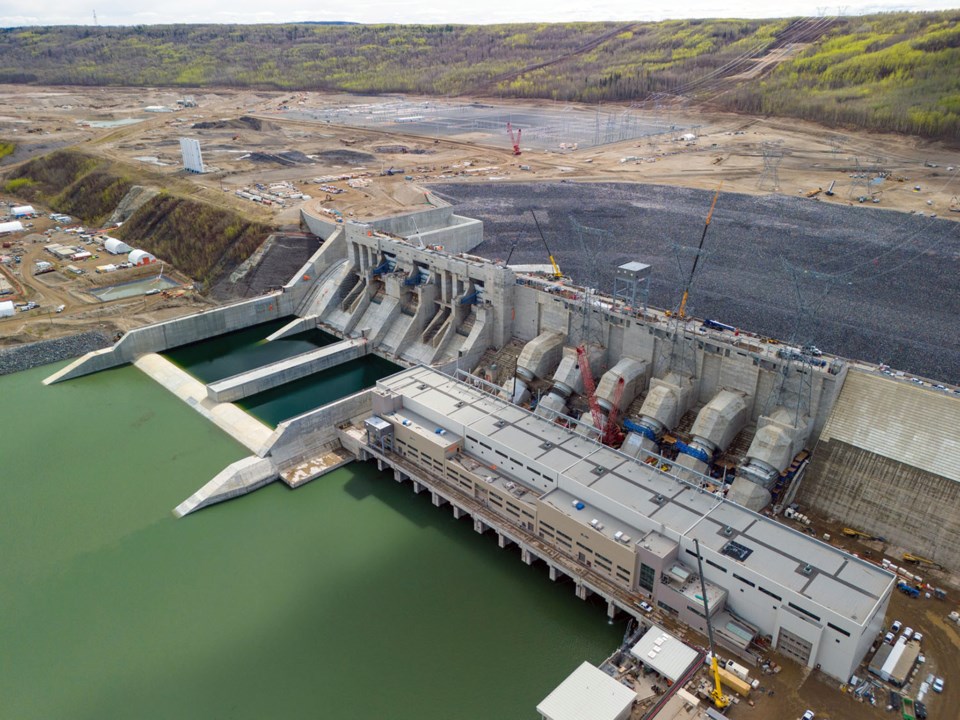Nearly a decade ago, in the summer of 2015, work began on the Site C hydro-electric dam in the Peace River Valley.
At the end of this month, the last stage of the $16-billion dam project starts with the in the Peace River Valley, and by the end of this year, in December, BC Hydro expects to turn on the first of six generating stations.
“Essentially all the construction areas of the project that need to be done to start reservoir filling are done,” said Greg Alexis, communications manager for the Site C dam.
The dam project is currently about 87 per cent complete. Peak employment was reached in June last year with 6,000 workers. That workforce was down by half to 3,000 in June this year.
Site C dam was given the green light by the Christy Clark Liberal government in 2014 and work began on the project in 2015. It’s original estimated capital cost was $6.6 billion, but it eventually more than doubled to $16 billion.
The project was halted by the new John Horgan NDP government in 2017 and subjected to a review by the BC Utilities Commission (BCUC).
That review concluded that construction was too far along to kill the project without incurring a $4-billion write-off and an immediate 12 per cent BC Hydro rate increase. Horgan reluctantly approved the project again in 2017.
More than a dozen legal challenges and injunctions were launched against the project by First Nations, environmental groups and ranchers and farmers with the Peace Valley Landowner Association, but none succeeded in halting the project.
One criticism made of the project at the time when it was being debated and approved was that ÎÚÑ»´«Ã½’s electricity demands had plateaued and that it would end up producing a surplus of power.
But since then, the ÎÚÑ»´«Ã½ government introduced electrification requirements under its CleanBC plan for everything from transportation to the natural gas and LNG industry, which will mean an increased demand for clean electricity.
Even with Site C dam coming online next year, BC Hydro is expecting there could be a power shortfall before the end of this decade, and has put out a call for 3,000 gigawatt hours (GWh) of new power from independent power producers. That is a little over half of what Site C will be capable of producing -- 5,100 GWh.
Site C is downstream of two other hydro-electric dams: W.A.C. Bennett and Peace Canyon dam.
“Essentially that water gets used three times,” Alexis said.
Site C dam will have a nameplate capacity of 1,100 megawatts of power generation. That’s in addition to the 2,730 MW of Bennett dam and 694 MW from Peace Canyon dam. Site C’s 1,100 MW will add eight per cent to ÎÚÑ»´«Ã½ total power generation capacity.
One of the first major works on the project was water diversion. Two one-kilometre tunnels had to be built to temporarily detour water from the Peace River around the Site C dam construction site.
One of the tunnels is now to be closed, and river water will begin filling the new reservoir, which stretches 80 kilometres from Hudson’s Hope and Fort St. John. Eventually, the second tunnel will be closed as well. Once the reservoir is filled, the two tunnels will be back-filled and permanently sealed.
It will take four months for the reservoir to fill.
The dam has turbine generating stations. The first will be turned on sometime towards the end of December. One by one, the others will be commissioned, and all all will be in service in 2025.

